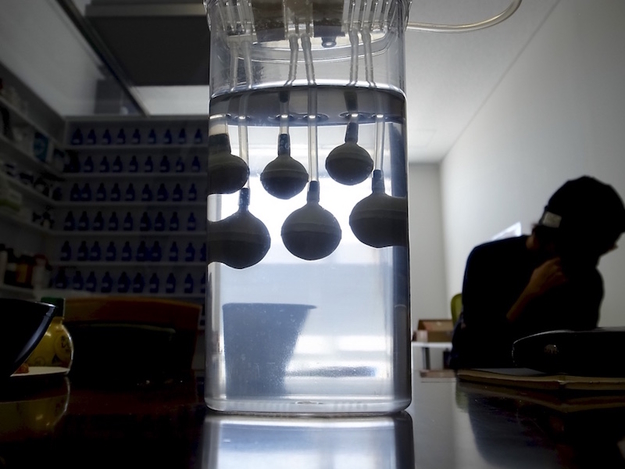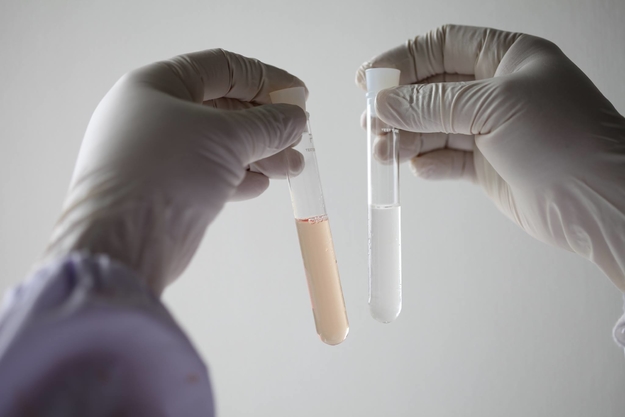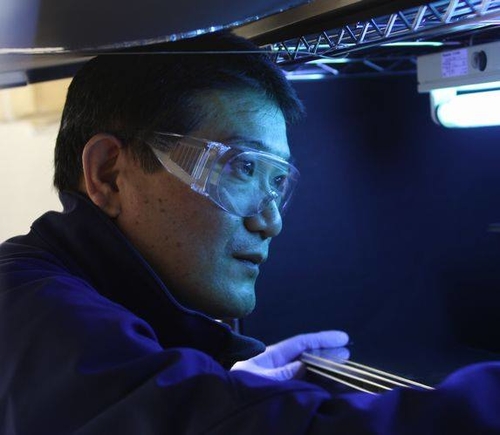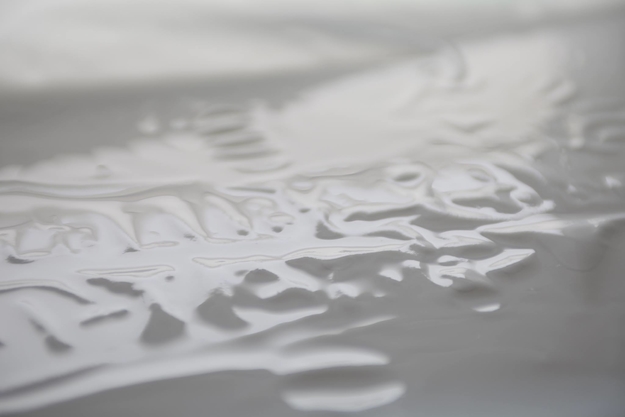Conversation with Doctor Tetsuro Oike and Mr. Takeshita founders of FILTOM.
They developed a special filtration technology, the PD filtration technology. It is inspired by the bodily functions of the kidney and the aim is to purify wasted water and sea water. At the moment they cannot recycle urine ‘but we will break through the tasks and make it,’ they say.
We were talking about the important discoveries on water purification that have been developed at the moment.
O.T: We can say that our study for the PD filtration is one of the newest challenges in the world because it is developing a kidney-like membrane separation. There are 3 types of membrane separations: the first one is a standard "Dead-end" filtration. The second one is called "Cross-flow" separation, which has been able to improve clogging of the dead-end filtration. The third one is an advanced cross-flow separation which is trying to control flow rate, filtration pressure and filtration speed.
Our PD filtration is known as one of the 3rd type filtration.
Nowadays, we are making drinking water by two methods, RO filtration (Dead-end) and Distillation. But both of them spend lots of energy. Some researchers think that the kidney system is one of the solutions.
Thanks to the kidney system, our body is purify more than 200L of blood and producing urine. The kidney system exchanges ions to take back around 198L of pure water from the urine. This entire system needs just a small pressure, less than 5kPa, while RO filtration needs more than 2000kPa. To be sustainable we need high efficiency systems that make water like the kidney system. Many researchers keep trying to find solutions, including the industrial way and/or biological way, using a stem cell to make the kidney system. We hope we can help the challenge.
Kidney type filtration test-kit - Picture of the prototype in the lab of Filtom.
You are also involved in FILTOM, a new model of a company that tries to invest profit to analyse common social problems. Do you think that this could represent a winning philosophy? Why is so important to open up scientific innovation to the commons?
O.T: We think social demand is satisfied by private companies which are controlled by stake holders. And in most cases, big stake holders have the strongest power. Of course our company, FILTOM, is still really small, but we believe we have enough power to control the development direction of a private company. This is very important to keep the right direction of the scientific innovation. Universities are using basic knowledge to keep our right direction. The problem is generated when private companies use the basic technology from universities.
How would you define your approach to biotechnology?
O.T: Regarding the materials, we have almost finished developing the basic manufacturing process to make the regenerated cellulose membrane as the specialised membrane for the PD filtration. But to achieve the kidney system, we need to add one more function to the membrane which can exchange ions or taking back pure water from dirty water, like the "water channel" or "ion channel.” Very important is the development of the technical apparatus. The specialised equipment for the PD filtration needs a complicated structure to control flow rate, filtration pressure and filtration speed. FILTOM is still improving the PD filtration equipment today. This is the most of our know-how to purify placental extract which cannot filtrate with other filtration systems.
In Filtom you are also developing new strategies for beauty products. Since the Industrial Age the policy has been relying on the idea of the Worst Case Scenario: soaps and cleaning supplies sterilise as much and as fast as possible. In doing so, they are ignoring the different kinds of skins, the diverse water compositions and many other variables...
Is FILTOM considering those differencies in the chemical composition of the products, if yes can you explain to us why and how?
O.T: That's the question we'd like to answer. With many reasons, we think, most cosmetic companies are using artificial chemicals or vegetable origin materials which are easy to get in low prices. To avoid allergy risk, the number of ingredients must be low, especially the strong vegetable extract.
As for sterilisation, we think, if possible, skin care products must be manufactured with fresh material, like fresh food, which required little or no sterilisation, and speedy processes. FILTOM is using just small number of raw fresh materials. The shelf life of most Japanese cosmetics is over 3 years, but FILTOM's products are only 6 months because of low sterilisation. I think skin care products are similar to saving soil diversity in agriculture.
We also select the most friendly soap for bacteria living on our skin. In our opinion, natural soap is the best, but standard soap is solid. So we've developed a new gel type soap which can use the fresh soap every time.
And what about flushing toilets?
O.T: To develop many methods in order to reduce the consumption of flushing water is of great importance. We should separate water usage into potable water and non-potable water in our house, then a big water purification centre won’t need to send such a big amount of drinking water to the flushing of toilets.
Going back to the PD filtration technology... It would be very challenging to solve the water shortage that is affecting many places in the world. How long do you think it will takes to make it economically and technically accessible to people living in developing countries and suitable for decentralised infrastructures?
O.T: It will take more than 50 years, as we mentioned on our web site. But it means it is the case with the present pace and number of colleagues. If we can share the tasks and results, not only ours, but also other challengers' in the world, the pace will be faster. This is the purpose to establish the FILTOM. We disclose our result to make the pace faster.



